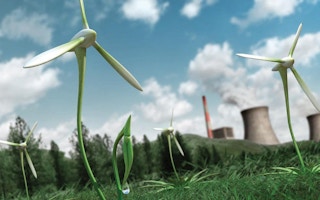It’s a question which goes to the heart of virtually any discussion about the future and the impact of climate change: how is it possible to maintain or increase energy supplies while at the same time cut back on CO2 emissions?
Faced with this dilemma, there are those who say the only course of action is to do away with the idea of economic growth – an argument that does not go down well in many quarters. But a new study says the world can, in fact, have its cake and eat it – growth can continue and CO2 emissions can be cut.
The study, by the Energy Futures Lab and Grantham Institute of Climate Change at Imperial College, London, says the key is employing technology to radically decarbonise the world’s energy sector: this, say the researchers, can be accomplished with technologies that either currently exist on a commercial scale, have been demonstrated to work or are still awaiting full-scale deployment.
The study states the present position: the world needs to limit the overall global temperature to around 2°C above pre-industrial levels by 2050 in order to avoid the more serious impacts of climate change. That means a wholesale cut in fossil fuel use and a big reduction in CO2 emissions – from around a global total of 31 gigatonnes (Gt) per year at present to about 15 Gt per year in 2050.
Fundamental importance
The trouble is we are going the wrong way: on present projections – and barring a cataclysmic meltdown of the world economy – fossil fuel consumption will increase by 50% between now and 2050 and CO2 emissions could rise to 50Gt per year or more. This would result in higher global temperatures and possible runaway climate change.
The study divided the world into ten geographical regions and, in each area, projected both economic output and population growth to 2050. The global population is likely to grow to more than nine billion, say the researchers, while real per capita incomes will almost treble.
Decarbonising the world’s electricity generation system is fundamental says the study: the large-scale development and commercial deployment of carbon capture and storage (CCS), biomass, solar, wind and nuclear sources should be high on every government’s agenda.
“…With challenging but feasible penetrations of low-carbon technologies, an energy and industrial system transformation is possible…”, says the study. It focuses on three sectors: industry, buildings and transport.
It says: “…There needs to be a shift towards electrification of industrial manufacturing processes, building heating systems and vehicle propulsion systems.
“A range of technologies will be required to achieve this, including increased penetrations of electric arc furnaces in steelmaking, heat pumps in buildings and battery electric and hybrid vehicles in road transport.
“Considerable investment in developing new technologies, with associated infrastructure, needs to begin now in order to enable the penetrations of these technologies that are required by 2050.”
Achievable goals
The study admits that all this will be very challenging in technological, operational, social and political terms. For example, achieving targets for bioenergy would require the use of nearly 9% of the world’s total arable and pasture lands.
The goal is achievable – and affordable – says the study. Its analysis indicates the transition to a low carbon energy future would cost about US$2 trillion a year by 2050. While that figure might seem large, the researchers point out it would amount to only about one per cent of global gross domestic product, based on projected 2050 GDP figures.
Whether or not the planners and politicians will take heed of the study’s findings is the big question. In 2006 the Stern Review examined the impact of climate change, warning of the escalating costs in economic terms of not taking action to limit greenhouse gas emissions. In May this year CO2 concentrations in the atmosphere reached 400 parts per million, a level generally considered to be the highest for more than four million years.








